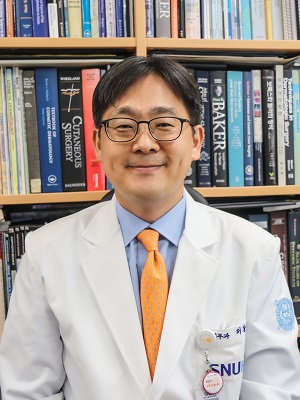
Electricity is one of the most vital energy sources for enjoying a civilized life, and it plays a significant role in the medical field. In terms of skin treatment, electricity is also used as energy to operate medical devices and as a treatment tool that directly enhances the tissues.
When you look at the principles of medical devices used for skin treatment, most of them usually induce the deterioration or destruction of the targeted tissues by generating heat. Hair removal laser uses the principle that black hairs are selectively damaged by irradiating laser beam absorbed much more by black-colored melanin. On the other hand, the vascular laser uses the principle of destroying red vessels more by absorbing red hemoglobin.
It is no exaggeration to say that the history of the development of skin medical devices is a history of trying to find the answers to the question, "How can we selectively generate and destroy tissues we want by heat while minimizing damage to the surrounding tissues?"
For a direct treatment effect on the skin via electricity, tissue destruction or denaturation caused by heat generation is most important. However, unlike lasers, electricity has little tissue selectivity. In other words, the biggest difference between laser and electricity is that the latter destroys the contact area regardless of the type of tissue (though there may be a bit more difference).

After the era of ancient Egypt (3000 BC), when there was no other way to generate heat, hot stones or iron was used to stop bleeding or treat tumors, and this remains under the name of "cautery" even in modern times.
Electricity was used as an energy source to generate heat in the late 19th century after some scientists had discovered that heat generates when a high-frequency alternating current passes through the human body. Then in 1926, a decisive leap forward was reached in America. Harvard University physicist, William Bovie, invented an electrosurgical device that controls the voltage and current output. On October 1 of the year, a neurosurgeon, Harvey Cushing, had opened the passage to modern electrosurgery as he successfully removed tumors with the device from a 64-year-old patient, who could not function due to high vascularity. Later, with the medical device commercialized, the word "Bovie" was used as a common noun for "electric surgery" or a verb "to perform electrical surgery" in honor of the inventor. Electrosurgery is mostly used in operating rooms for hemostasis or direct tissue destruction with the aids of magnification of a loupe or an endoscope.
As mentioned above, electricity cannot be used without direct observation because it does not have tissue selectivity and destroys all the tissues it touches. But it became one of the most fundamental procedures as most dermatologic problems are visible with naked eyes. Even today, when the laser developed much later became common, the electrosurgical devices continue to develop and improve, being the most basic device for cosmetic treatments and removing skin tumors.


